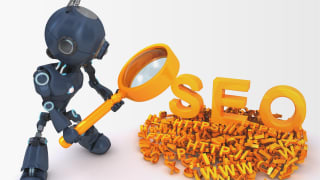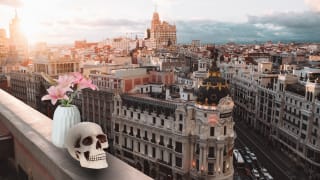What Melbourne’s flexible design identity shows us about the value of a logo
We can never say this enough: there’s more to place branding than a logo and a tagline. If you want to change perceptions or your city, nation, or place, then you need to have the right values, policies, and/or to support your communication strategy. That said, a design identity is easily the most visible aspect of a place brand and, when it works well, can align all stakeholders behind your vision.
So how do you capture the complexity of an entire city in a single image? What’s the value of aligning all city organisations under a single brand architecture? And, more importantly, how do you start to measure the impact and effectiveness of a new brand identity?
To understand a little more, we thought it would be interesting to look at a place brand identity redesign that has stood the test of time and continues to inspire the city’s vision for the future.
Ten years ago, Melbourne’s city identity was viewed as outdated and the wide range of stakeholders had conflicting designs that fragmented the city’s image further. A new design would have to have the flexibility to accommodate an array of organisations whilst remaining fresh and current.
Overhauling Melbourne’s design
Arguably the key to the success of this rebrand was found before pen even touched paper. Landor, the design consultant responsible for designing and implementing the new brand, underwent a thorough, seven-month, research process. This included a full audit of Melbourne’s various identities and of its long-term sustainability and strategic plan: desk research, stakeholder interviews, workshops and audits created the foundation for the new identity. After all, for a design to succeed, the city has to see themselves reflected in the logo.
“Talking to a number of internal and external stakeholders was key to clearly comprehending the fabric of the city itself,” explained Nick Foley, President of Southeast Asia, Pacific and Japan for Landor. “We quickly identified what success looked like and, over time, we came to trust one another’s judgement when making critical decisions.”

The result was the beautifully simplistic M. It’s instantly recognisable, and as multi-faceted as the city itself. But most importantly, it’s incredibly versatile.
The dynamic design is capable of constant reinvention and recreation – all while remaining true to the original framework of the design.
There are any number of recreations of this design, and the continual updates ensures the design retains a fresh feel.
But what was the impact?
At the launch of the new identity, the former Lord Mayor Robert Doyle announced that “The ‘M’ design will become an icon for Melbourne, synonymous with the modern, vibrant, cool city Melbourne is today and will continue to be in the future… The new identity will deliver more impact, be stronger, more flexible and reduce confusion as to who is delivering services. It will build greater long-term identification and align with best practice around the world.”
But what value did the new identity actually deliver?
One year after the rebrand, Melbourne’s gross regional product had grown by 6%. Three years later, and over-night visitors had increased by 4.5%, and Melbourne’s tourism was valued at $15.2bn. 10 years down the line, and the City was ranked as the second most liveable city in the world by the Economists’ Global Liveability Ranking for 2019. And this follows a seven-year stint at the top of the ranks. [Neither London nor New York make the top 40 in a ranking of 140 cities.]. Clearly these results are attributable to more than the brand redesign – but the fact that there was an immediate measurable 15% increase in the brand value between 2006 and 2011 according to BAV suggests that putting a strong brand identity at the heart of your place brand strategy can reap dividends.
Standing the test of time
Melbourne’s new design identity continues to be used throughout their branding (take their recent Feel the City campaign). But more than that, design and innovation have become key aspects of the city’s place brand identity. Recognised as the Creative Capital of Australia, Melbourne continues to push boundaries. A new app in 2020 will transform Melbourne into a ‘playable city’, combining art, augmented reality and games technology and encouraging visitors to go deeper and explore the city further. Melbourne’s Design Week continues to grow from strength to strength, with the largest line-up to date announced for 2020.
And with new major changes being made to their urban design policies – including a new pedestrianised area - we look forward to seeing how the city continues to embrace design as a key aspect of its global reputation.
“A culture of design excellence cannot be created overnight,” says the current Lord Mayor Sally Capp. “We want to raise the bar on urban design outcomes, generate meaningful discussions around design culture and achieve a greater contribution to the public realm from private develop:ments.”
Related reading:
Destination branding in a time of lockdown
Has the pandemic killed soft power?
The politics of space, culture, and placemaking on post-COVID place branding
The roadmap for sustainable recovery









